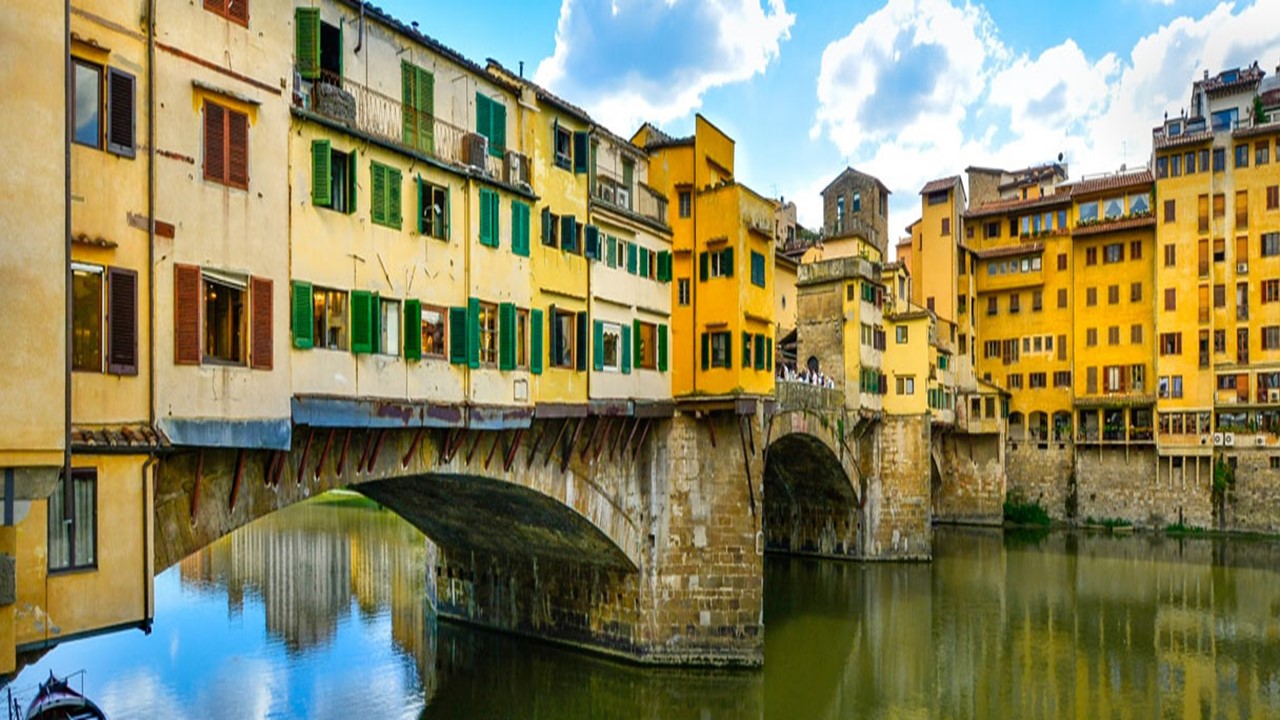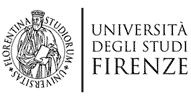Visit Florence
Below you can find the suggested visits recommended by the organizing committee of the Conference
1. Piazza Duomo an the Baptistery
Florence's cathedral stands tall over the city with its magnificent Renaissance dome designed by Filippo Brunelleschi, with the baptistery right across. The cathedral named in honor of Santa Maria del Fiore is a vast Gothic structure built on the site of the 7th century church of Santa Reparata, the remains of which can be seen in the crypt. The cathedral was begun at the end of the 13th century by Arnolfo di Cambio, and the dome, which dominates the exterior, was added in the 15th century on a design of Filippo Brunelleschi. A statue to each of these important architects can be found outside to the right of the cathedral, both admiring their work for the rest of eternity. Can you imagine it took two centuries for the cathedral to be deemed finished? The exterior is covered in a decorative mix of pink, white and green marble. The interior, by contrast, is pretty stark and plain but quite enjoyable on warm summer days since the temperature inside tends to be cooler. The mosaic pavements are certainly its main attraction within.
Don't forget to climb up to the very top of the cupola and the Giotto's Beautiful Bell Tower next to it.
2. Piazza della Signoria: Palazzo Vecchio and Loggia dei Lanzi
The Piazza della Signoria has been the center of political life in Florence since the 14th century with the prominent Palazzo Vecchio overlooking the square. It was the scene of great triumphs, such as the return of the Medici in 1530 as well as the Bonfire of the Vanities instigated by Savonarola, who was then himself burned at the stake here in 1498 after he was denounced by the Inquisition as a heretic. A marble circle inscription on the piazza shows the location where he was burned.
Bandinelli's Hercules and Cacus (1534) to the right of the David was appropriated by the Medici to show their physical power after their return from exile. The Nettuno (1575) by Ammannati celebrates the Medici's maritime ambitions and Giambologna's equestrian statue of Duke Cosimo I (1595) is an elegant portrait of the man who brought all of Tuscany under Medici military rule.
The graceful Loggia dei Lanzi, which sits to the right of Palazzo Vecchio and functions as an open-air sculpture gallery, was designed by Orcagna in 1376. Its curved arches foretell Renaissance classicism. The statue of Perseo holding Medusa's head, by Benvenuto Cellini (1554), is a stark reminder of what happened to those who crossed the Medici. Together with Giambologna's Rape of the Sabines, these are two of many beautiful sculptures found under the arches of the Loggia dei Lanzi.
3. Ponte Vecchio
Built very close to the Roman crossing, the Ponte Vecchio, or Old Bridge, was the only bridge across the Arno in Florence until 1218. The current bridge was rebuilt after a flood in 1345. During World War II it was the only bridge across the Arno that the fleeing Germans did not destroy. Instead they blocked access by demolishing the medieval buildings on each side. On November 4, 1966, the bridge miraculously withstood the tremendous weight of water and silt when the Arno once again burst its banks.
It is possible to document the first bridge since 966 and even its reconstruction after the flood in 1345 however, the present construction is a bit of a mystery. Even though Giorgio Vasari, an artist & chronalist from the 1500’s, attributed the bridge to Taddeo Gaddi, the construction seems to point more towards the involvement of the D.ominican friars with their keen sense of proportion, harmony and use of numbers. We do know however that the bridge was built as a system of defense, and the windows and artistic elements that we can admire now were added after the shops were sold to the merchants.
When the Medici moved from Palazzo Vecchio to Palazzo Pitti, they decided they needed a connecting route from the Uffizi to the Palazzo Pitti on the other side of the Arno that would enable them to keep out of contact with the people they ruled. The result was the Corridoio Vasariano, built in 1565 by Giorgio Vasari and which runs above the little goldsmiths' shops on the Ponte Vecchio.

4. The Uffizzi Gallery
The museum is organized as a long labyrinth of rooms with amazing works of art displayed roughly in chronological order along a U-shaped Renaissance building which was never created to be a museum. Cosimo de’ Medici had entrusted his favorite architect Giorgio Vasari to create a grandiose building right next to Palazzo Vecchio, the seat of power, to host the magistrates, the seats of the Florentine Guilds, a vast theatre and judiciary offices (hence the name “Uffizi” which means offices in Italian). The halls of the top floor of the Uffizi at first were only accessible to the Grand Ducal family, servants and only a few select guests where the family started to place the many pieces of their personal private collections. Guests were welcomed on the top floor to admire the grandiose collection of Roman sculptures the Medici loved to collect.
Touring the Uffizi is surely one of the highlights of visiting Florence. The best part of the day to visit is doubtless in the afternoon; better after 4pm once large groups have left the museum. Take your time, enjoy glancing at the portraits, the views over the hills, the unforgettable priviledge of walking through “the Medici offices” with patience and respect for timeless treasures.
5. The Pitti Palace and Boboli Garden
This enormous palace is one of Florence's largest architectural monuments. The original palazzo was built for the Pitti family in 1457, designed by Filippo Brunelleschi and built by his pupil Luca Fancelli. The original construction consisted of only the middle cube of the present building (the middle seven windows on the top floor). In 1549, the property was sold to the Medicis and became the primary residence of the grand ducal family. The palace was then enlarged and altered; from 1560, Bartolomeo Ammannati designed and added the grandiose courtyard and two lateral wings.
Today, the Pitti Palace houses some of the most important museums in Florence: on the first floor is the Palatine Gallery, containing a broad collection 16th and 17th century paintings (including works by Raphael), and the Royal Apartments, containing furnishings from a remodeling done in the 19th century.
The Boboli gardens are one of the greatest open-air museums in Florence that embraces another site of culture in Florence, the Pitti Palace. The park hosts centuries-old oak trees, sculptures, fountains and offers peaceful shelter from the warm Florentine sun in summer, the beautiful colors of the changing foliage in the fall and smells of blooming flowers in the spring. The Boboli gardens are a spectacular example of "green architecture" decorated with sculptures and the prototype which inspired many European Royal gardens, in particular, Versailles.
Map of the tour
For more and furher information:
https://www.visitflorence.com/florence-churches/duomo.html


